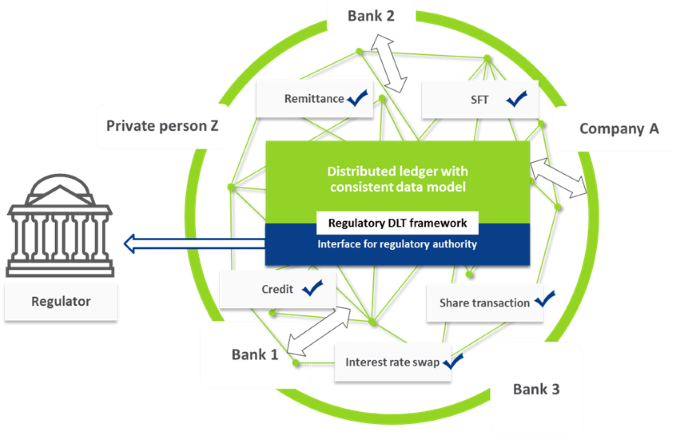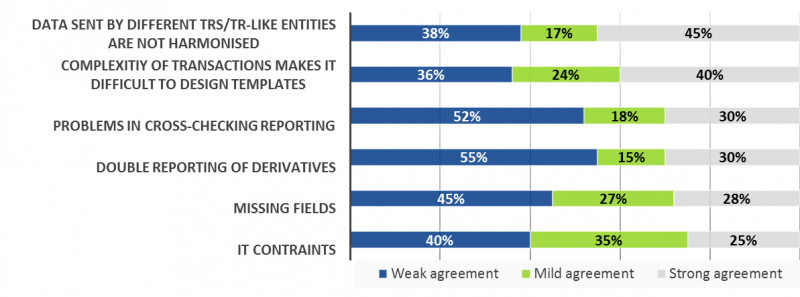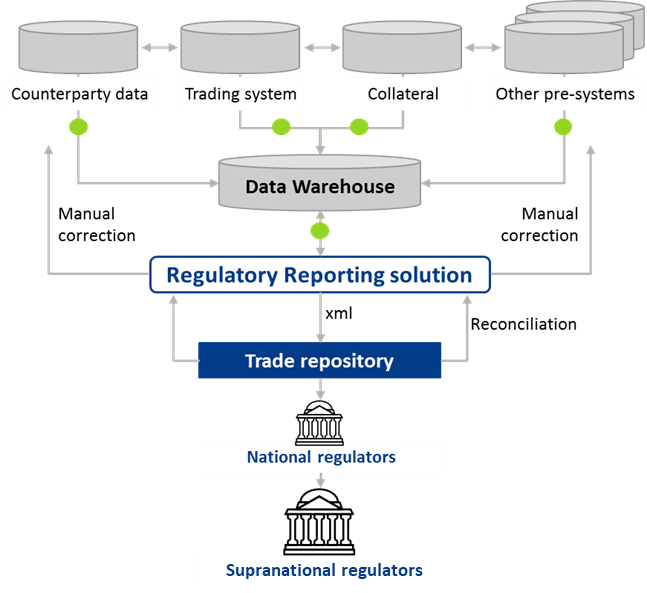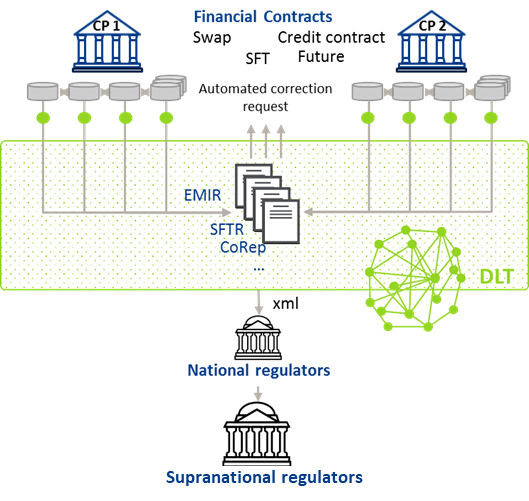References
BaFin (2019): Mission Statements. https://www.bafin.de/EN/DieBaFin/Ziele/ziele_node_en.html, retrieved: 25.10.2019
Berger, Allen, Philip Molyneux and John O.S. Wilson (2015): Banking in a post-crisis world. In: Oxford Handbook of Banking. 2nd Edition. Oxford.
BIS (2018): IFC Report – Central banks and trade repositories derivatives data.
https://www.bis.org/ifc/publ/ifc_report_cb_trade_rep_deriv_data.pdf, retrieved: 27.08.2019
BIS (2019): Embedded supervision: how to build regulation into blockchain finance. https://www.bis.org/publ/work811.pdf, retrieved: 20.09.2019
BearingPoint (2019a): A proof of concept for regulatory reporting with distributed ledger technology.
https://www.reg.tech/files/BearingPoint_Whitepaper_DLT_PoC_Preview.pdf?download=0&itemId=11005, retrieved: 02.09.2019
BearingPoint (2019b): Financial supervisors and central banks as a part of Blockchains?. https://www.reg.tech/en/download/?item=398&module=9493, retrieved: 02.09.2019
Blundell-Wignall, Adrian and Paul Atkinson (2011): Global SIFIs, Derivatives and Financial Stability. In: OECD Journal: Financial Market Trends Vol. 2011/1. https://www.oecd-ilibrary.org/finance-and-investment/global-sifis-derivatives-and-financial-stability_fmt-2011-5kg55qw0qsbv
Board of Governors of the Federal Reserve system (2016): The Federal Reserve System: Purpose & Functions.
https://www.federalreserve.gov/aboutthefed/files/pf_complete.pdf
European Parliament and the council of the European Union (2012): Official Journal of the European Union (2012). Regulation (EU) No 648/2012 of the European Parliament and of the Council of 4 July 2012 on OTC derivatives, central counterparties and trade repositories.
ESMA (2019): ESMA 2019 annual programme (2019).
https://www.esma.europa.eu/sites/default/files/library/esma20-95-933_2019_annual_work_programme.pdf
FCA (2017): Our Mission 2017 – How we regulate financial services.
https://www.fca.org.uk/publication/corporate/our-mission-2017.pdf
FCA (2019): FCA fines Goldman Sachs International £34.3 million for transaction reporting failures.
https://www.fca.org.uk/news/press-releases/fca-fines-goldman-sachs-international-transaction-reporting-failures, retrieved: 20.09.2019
Kern, Alexander (2019): Principles of Banking Regulation. Cambridge.
OECD (2014): OECD Regulatory Compliance Cost Assessment Guidance. OECD Publishing.
https://read.oecd-ilibrary.org/governance/oecd-regulatory-compliance-cost-assessment-guidance_9789264209657-en#page10








